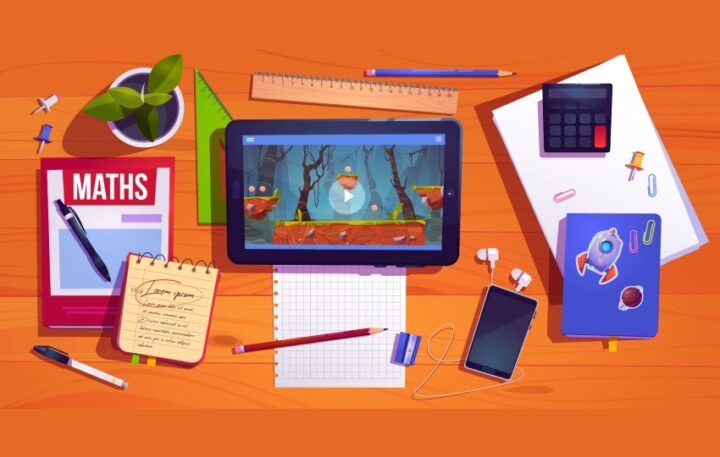The term gamification refers to the use of various play-based mechanisms and elements to enhance the learning experience.
What does not constitute gamification?
Gamification is neither a game nor a form of game-based learning. It is a novel approach to learning that incorporates the concept of a game. In Game Based Learning (GBL), the game itself is utilized as a teaching tool, whereas in game play, only its mechanisms and elements are utilized.
Elements of gamification
Students are engaged in the learning process by transforming learning objectives into assessments and providing incentives.
Students are the protagonists of a story, which activates their internal motivations and increases their emotional engagement. Virtual environments and avatars are the most prevalent option in the gaming process.
Rules – instructions: The key component of the learning activity is the formulation of clear rules that determine what students may and may not do. In addition, providing clear instructions makes learning activities more engaging and comprehensible.
Feedback – motivation: It is essential for students to comprehend what they have accomplished cognitively on each test, while also being motivated to continue advancing.
Points – prizes – rewards: Playmaking elements awarded for passing a test. Prizes can be coins, badges, medals, or something else, in addition to experience points that contribute to the development of students and possibly the intensification of their commitment.
Useful for recording teams, players, and rewards. Putting them in a prominent location generates exogenous motivations as well.
Time constraints: The incorporation of time constraints into assessments of the learning process promotes responsible time and decision management among students.
Elements of integrating gamification education
The important designing elements for integrating gamification into education are:
- To identify the profile of the students: level of knowledge and learning peculiarities the educational process’s characteristics have to be identified.
- The space, the duration, the type of activities, the media, the criteria for the integration of students into groups, the methods and topics of their communication determining and how to evaluate them (points, badges, awards) have to be determined.
- Play mechanisms for:
- focusing the student’s attention on the educational topic;
- enhancing the student’s receptivity to the provided information.
- to be inspired to engage actively in the educational process
Those goals that must be met by the educational process have to be identified at first, followed by those that are attainable.
Activities whose effectiveness could be enhanced by gaming should be designed and developed, and the necessary resources for the development of gaming mechanisms have to be secured.
Mechanisms for gamification needed
In order for the development of the gaming mechanisms to be as successful as possible, the following requirements had to be satisfied:
- The student’s understanding of the framework of the mechanisms.
- The utilization of modern information and communication technologies.
- The use of playful mechanisms in a manner that does not hinder the effectiveness of education.
- The student’s role in the play process is evident.
- The student evaluation procedure is transparent
- To be able to finish the play procedure
Example of gamification in education
Course: Modern Greek language
Didactic unit: The paragraph
Initial actions
- a discussion session was held with the students about the terms and the process of gamification
- detailed information was given about the missions and the evaluation system: points, badges, awards
- the scoreboard was displayed
Level 1 – Card game
Students (groups) were given card categories with the titles: Youth, Internet, Violence, Globalization
Each group was given a box containing cards with four paragraphs corresponding to each of the above topics. Specifically,
- the responsibility of young people in repeating sexist stereotypes
- the promotion of stereotypes about women on the internet
- stereotypes about women as causes of gender-based violence
- gender-based violence in a globalized society
Students were instructed to place the paragraphs in the appropriate category and select the missions they wished to carry out.
In the paragraphs of the category “Young People,” students were tasked with finding organizational strategies (positive and negative score).
In the “Internet category” paragraphs, they were asked to identify the keywords upon which the paragraphs’ content development is based.
In the paragraphs of the category “Violence,” the structural elements of the paragraphs were sought.
It was requested that in the paragraphs of the “Globalization category” the connecting words-phrases of the paragraphs’ meanings be identified.
Level 2 – Discussion
The students engaged in a discussion regarding the characteristics of the paragraph. The teams collaborated to respond.
Level 3 – Digital Narration
Each group chose their favorite card category.
Each group was asked to write a paragraph (on a topic related to the general category).
This was followed by recording with Audacity software and creating a digital narrative with the animoto video creation service based on the respective steps.
Level 4 – Presentation and Award
Presentation of the digital narratives of the groups and award, depending on their achievements.
Conclusions regarding the advantages of the educational process
The participation scoring system piqued the students’ interest; the introduction of varying levels of difficulty increased their interest in participating in the educational process; and participation in groups served as a catalyst for maintaining their interest and completing the educational process.
In general, it was discovered that gamification has a positive effect on the educational process, as it increases student participation, makes learning more appealing, enhances collaboration between teachers and students and between students, and promotes self-learning and group learning.

